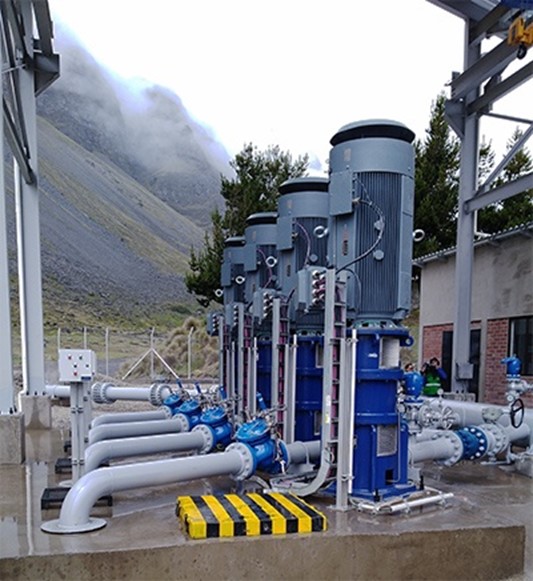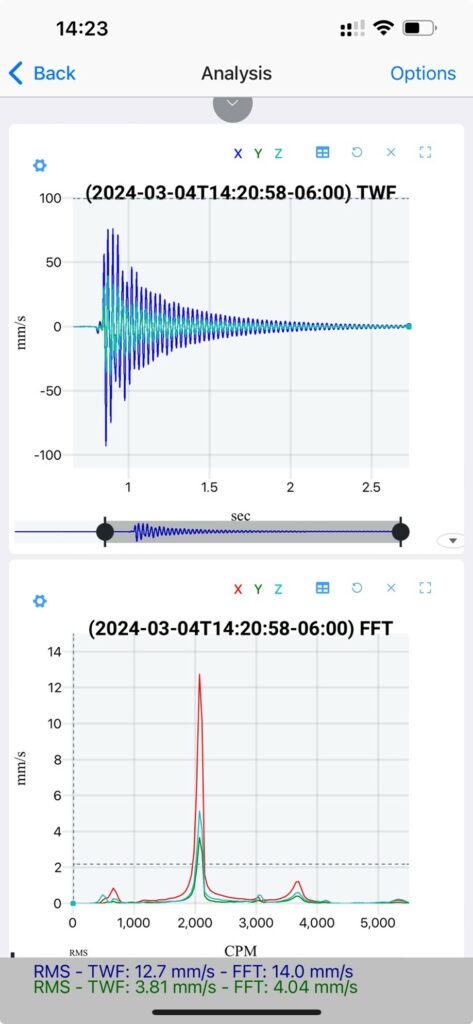The Mystery of a Non-Rotating Pump's Resonance
Exploring the intricate forces in industrial machinery demands a solid grasp of mechanical concepts and creative problem-solving skills. This case study shares my experience in identifying and solving a resonance problem on a 500-horsepower deep well pump at an electric power generation company, emphasizing the crucial role of vibration analysis and innovative thinking in engineering.
In a new section of the power plant, several identical pumps were installed for deep water extraction. One of these pumps was vibrating unusually since its installation, prompting an in-depth investigation to find and fix the root cause, a challenge that I took on.
Upon arrival, I was met with the ongoing discussions of two other analysts, fixated on the presumption of a bent pump shaft as the culprit behind the unusual vibrations. Resolute in my approach, I opted for a comprehensive analysis, a decision that would soon unravel the true nature of the problem at hand.
Diagnostic Journey
My journey to diagnose the issue began with a surprising request to activate the pump. This was a critical first step in revealing the problem. Despite what others before me thought — that the pump’s vibrations meant it was running — it turned out the pump wasn’t operating at all. This key finding suggested that something external was causing the pump to vibrate.
When I later ran the pump, the vibration levels barely changed, supporting the idea that the cause was external. The turning point in my investigation came when I turned off another pump nearby, and the vibrations stopped altogether. This clear evidence led me to focus on resonance as the likely reason for the vibrations.

To confirm if resonance was indeed the issue, I conducted an impact test. This involved hitting the pump structure with a heavy metal object in a controlled manner, ensuring the object was dampened at the moment of impact to prevent any damage. This technique was crucial for keeping the pump intact while allowing me to precisely assess how it vibrated.
I used specialized applications, Wiser Vibe and Digivibe, to thoroughly examine the vibration data from three separate impacts. Upon striking I found the data from all three tests aligned perfectly with the pump’s rotational frequency. This key piece of evidence confirmed my suspicion of resonance. It showed that external vibrations were in sync with the pump’s own natural frequency, causing an increase in the vibration intensity.
Resonance Correction Strategies
Correcting resonance typically involves one of three strategies:
- changing the operational speed of the equipment,
- altering the natural frequency by modifying the structure’s stiffness,
- or changing the mass to adjust the natural frequency.
In this case, adjusting the operational speed was not feasible, and altering the stiffness of the new equipment was undesirable due to potential visual discrepancies with other similar pumps, which could lead to client dissatisfaction.
The decision to replace the aluminum motor cover with an identical steel variant was not taken lightly. This change aimed to adjust the pump’s mass, thereby shifting its natural frequency away from the operational frequency to eliminate resonance.

The replacement of the motor cover proved to be a decisive move. The increased mass effectively lowered the natural frequency, distancing it from the operational frequency and, consequently, mitigating the resonance. This solution not only addressed the immediate problem without hindering the pump’s performance but also exemplified the application of fundamental engineering principles to solve real-world challenges.
This experience was a profound reminder of the complexities inherent in industrial machinery and the critical role of vibration analysis in maintaining operational integrity. The process from initial observation to the implementation of a solution underscored the importance of a methodical approach, the utility of modern analytical tools, and the value of innovative problem-solving.
My journey through diagnosing and resolving the resonance issue in this deep well pump serves as a testament to the engineering profession’s challenges and rewards. It highlights the necessity of empirical analysis, the collaboration among experts, and the thoughtful consideration of all possible solutions. Through this case study, I hope to contribute valuable insights to my peers, reinforcing the importance of applying engineering fundamentals with a creative mindset in the face of complex mechanical problems.
Dr. Thierry Erbessd, a prominent Mexican entrepreneur, and graduate of the National Polytechnic Institute has revolutionized the field of Vibration Analysis, Dynamic Balancing, and Condition Monitoring. Through his innovative software DigivibeMX®, DragonVision®, and WiSER Vibe®, he has set a before and after in the industry. As president of Erbessd Instruments®, he has not only led the company to the top of the global industrial maintenance industry but has also expanded its influence with strategically located offices in America, Europe, and Asia, establishing himself as an undisputed reference in industrial maintenance solutions worldwide.
ERBESSD INSTRUMENTS® is a leading manufacturer of Vibration Analysis Equipment, Dynamic Balancing Machines, and Condition Monitoring with facilities in Mexico, the USA, England, and India








